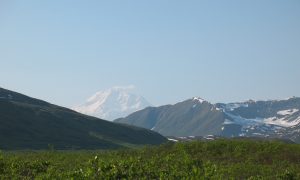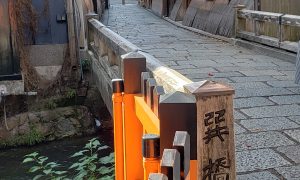by Kate Dernocouer, Guest Blogger
Two common things you see in the wilds of Kenya that are unusual to a person from North American are lots of really big thorns, and evidence of termites.
If you want non-thorny acacia trees, go to Australia, but if you are in Africa, expect thorns. Even the name derives from the Greek for “thorn” and the trees’ nickname (according to my go-to source, Wikipedia) is “thorntree.”
I love the variety and stark beauty of the acacias. While we walked 100 miles across Tsavo National Parks (West and East), we were constantly amongst thorny trees and bushes, many of them from the acacia family, but honestly, I came away without a scratch. I get worse scratches in my thorn-riddled meadows at home!
In September, the plains of Kenya are at the very-thirsty end of the dry season, and animals and vegetation alike are holding out those final weeks into November, when the rains come. We are told that almost overnight, the dead-looking brush comes alive with green leaves and flowers—a favored food resource because all that new growth is high in protein and very nutritious.
Even without their foliage, the thornbushes provide good cover—including for large animals!
Another fascinating phenomenon are termite hills. According to our Tropical-Ice Safaris guide, Alex Fiksman, there are hundreds of kinds of termites. Besides humans, termites are among the few species to farm (they grow fungus), and the only one that farms living creatures (aphids).
The termites build their mounds around something such as a small tree. A fully-fledged mound has a stovepipe look to it that would thrill Bert, the Mary Poppins chimney sweep. They are often huge! The tree is eventually subsumed. To touch a young termite hill is to discover that it has crisp edges that feel like gritty mortar, and that, though sandy, it seems as durable as concrete.
Eventually, though, anteaters dig in and disturb the mound. The termites leave (or get eaten…) and others find it a wonderful dwelling place. You might find the cute mammals known as hyrax living in deserted termite mounds. Or snakes. Think puff adders and cobras and such. This is why you never sit on an eroding termite hill, especially not over a hole!
Over time, the elephants are probably delighted to use the termite hills for scratching posts; they are perfect in size and shape for them. With their rubbing, the real erosion begins. It is hastened by the rains, and other smaller itchy creatures. Eventually, all that remains is a circle in the ground, a hump of same-colored earth. Elsewhere, the termites are re-building, adding their newest piece to the proper construction of their natural world.
For more about Kate’s Great Walk Across Africa, click here.
Kate Dernocoeur has a personal policy to “Live Large,” meaning, never to let a bit of risk get in the way of a chance for adventure. Some days, of course, the concept of “adventure” simply means getting out of bed, but that does not preclude grander schemes. Her latest adventure in Cambodia will be featured in upcoming guest blogs for DesignDestinations.org. Oh, btw, Kate says there are at least two lions in the first photo. Maybe three. Did you spot them?
















Comments
1 CommentMargaret
Dec 9, 2013Now that’s a “thorny” question about the lions…I missed seeing them in your photo and yet I saw them first hand in Kenya when you stopped to take that photo!! Nice article, Kate